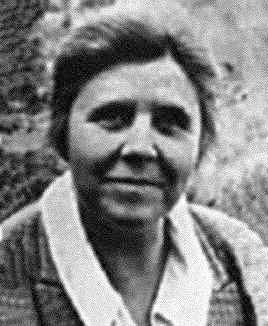

تاريخ الرياضيات

الاعداد و نظريتها

تاريخ التحليل

تار يخ الجبر

الهندسة و التبلوجي


الرياضيات في الحضارات المختلفة

العربية

اليونانية

البابلية

الصينية

المايا

المصرية

الهندية


الرياضيات المتقطعة

المنطق

اسس الرياضيات

فلسفة الرياضيات

مواضيع عامة في المنطق


الجبر

الجبر الخطي

الجبر المجرد

الجبر البولياني

مواضيع عامة في الجبر

الضبابية

نظرية المجموعات

نظرية الزمر

نظرية الحلقات والحقول

نظرية الاعداد

نظرية الفئات

حساب المتجهات

المتتاليات-المتسلسلات

المصفوفات و نظريتها

المثلثات


الهندسة

الهندسة المستوية

الهندسة غير المستوية

مواضيع عامة في الهندسة

التفاضل و التكامل


المعادلات التفاضلية و التكاملية

معادلات تفاضلية

معادلات تكاملية

مواضيع عامة في المعادلات


التحليل

التحليل العددي

التحليل العقدي

التحليل الدالي

مواضيع عامة في التحليل

التحليل الحقيقي

التبلوجيا

نظرية الالعاب

الاحتمالات و الاحصاء

نظرية التحكم

بحوث العمليات

نظرية الكم

الشفرات

الرياضيات التطبيقية

نظريات ومبرهنات


علماء الرياضيات

500AD

500-1499

1000to1499

1500to1599

1600to1649

1650to1699

1700to1749

1750to1779

1780to1799

1800to1819

1820to1829

1830to1839

1840to1849

1850to1859

1860to1864

1865to1869

1870to1874

1875to1879

1880to1884

1885to1889

1890to1894

1895to1899

1900to1904

1905to1909

1910to1914

1915to1919

1920to1924

1925to1929

1930to1939

1940to the present

علماء الرياضيات

الرياضيات في العلوم الاخرى

بحوث و اطاريح جامعية

هل تعلم

طرائق التدريس

الرياضيات العامة

نظرية البيان
Anna Johnson Pell Wheeler
المؤلف:
J Green and J LaDuke
المصدر:
Contributors to American Mathematics: An Overview and Selection, in G Kass-Simon and P Farnes
الجزء والصفحة:
...
18-5-2017
994
Died: 26 March 1966 in Bryn Mawr, Pennsylvania, USA

Anna Johnson was the daughter of Swedish immigrants who came to the United States about 10 years before Anna was born. When she was nine years old the family moved to Akron, Iowa where Anna attended private school. In 1899 she entered the University of South Dakota where she showed great promise in mathematics. The professor of mathematics, Alexander Pell, recognised her talents and helped persuade Anna Johnson that she should follow a career in mathematics. She received an A.B. degree in 1903.
After winning a scholarship to study for her master's degrees at the University of Iowa, she was awarded the degree for a thesis The extension of Galois theory to linear differential equations in 1904. A second master's degree from Radcliffe was awarded in 1905 and she remained there to study under Bôcher and Osgood.
Anna Johnson was awarded the Alice Freeman Palmer Fellowship from Wellesley College to study for a year at Göttingen University. There she attended lectures by Hilbert, Klein, Minkowski, Herglotz and Schwarzschild. She worked for her doctorate at Göttingen. While there Alexander Pell, her former mathematics professor came to Göttingen so that they could marry.
After returning to the United States, where her husband was by now Dean of Engineering, she taught courses in the theory of functions and differential equations. In 1908 Anna Pell returned to Göttingen where she completed the work for her doctorate but, after a disagreement with Hilbert, she returned to Chicago, where her husband was now on the university staff, without the degree being awarded.
At Chicago she became a student of Eliakim Moore and received her Ph.D. in 1909, her thesis Biorthogonal Systems of Functions with Applications to the Theory of Integral Equations being the one written originally at Göttingen. From 1911 Anna Pell taught at Mount Holyoke College and then at Bryn Mawr from 1918. Anna Pell's husband Alexander, who was 25 years older than she was, died in 1920. In 1924 Anna Pell became head of mathematics when Scott retired, becoming a full professor in 1925.
After a short second marriage to Arthur Wheeler, during which time they lived at Princeton and she taught only part-time, her second husband died in 1932. After this Anna Wheeler returned to full time work at Bryn Mawr where Emmy Noether joined her in 1933. However Emmy Noether died in 1935. The period from 1920 until 1935 certainly must have been one with much unhappiness for Anna Wheeler since during those years her father, mother, two husbands and close friend and colleague Emmy Noether died. Anna Wheeler remained at Bryn Mawr until her retirement in 1948.
The direction of Anna Wheeler's work was much influenced by Hilbert. Under his guidance she worked on integral equations studying infinite dimensional linear spaces. This work was done in the days when functional analysis was in its infancy and much of her work has lessened in importance as it became part of the more general theory.
Perhaps the most important honour she received was becoming the first woman to give the Colloquium Lectures at the American Mathematical Society meetings in 1927.
Books:
- J Green and J LaDuke, Contributors to American Mathematics: An Overview and Selection, in G Kass-Simon and P Farnes (eds.), Women of Science-Righting the Record (Indiana, 1990).
Articles:
- B Case et al., Anna Johnson Pell Wheeler, Association for Women in Mathematics Newsletter 12 (4) (1982), 4-13.
- L S Grinstein and P J Campbell (eds.), Women of Mathematics (Westport, Conn., 1987), 241-246.
- L S Grinstein and P J Campbell, Anna Johnson Pell Wheeler: Her life and work, Historia Mathematica 9 (1) (1982), 37-53.
 الاكثر قراءة في 1880to1884
الاكثر قراءة في 1880to1884
 اخر الاخبار
اخر الاخبار
اخبار العتبة العباسية المقدسة

الآخبار الصحية















 قسم الشؤون الفكرية يصدر كتاباً يوثق تاريخ السدانة في العتبة العباسية المقدسة
قسم الشؤون الفكرية يصدر كتاباً يوثق تاريخ السدانة في العتبة العباسية المقدسة "المهمة".. إصدار قصصي يوثّق القصص الفائزة في مسابقة فتوى الدفاع المقدسة للقصة القصيرة
"المهمة".. إصدار قصصي يوثّق القصص الفائزة في مسابقة فتوى الدفاع المقدسة للقصة القصيرة (نوافذ).. إصدار أدبي يوثق القصص الفائزة في مسابقة الإمام العسكري (عليه السلام)
(نوافذ).. إصدار أدبي يوثق القصص الفائزة في مسابقة الإمام العسكري (عليه السلام)


















